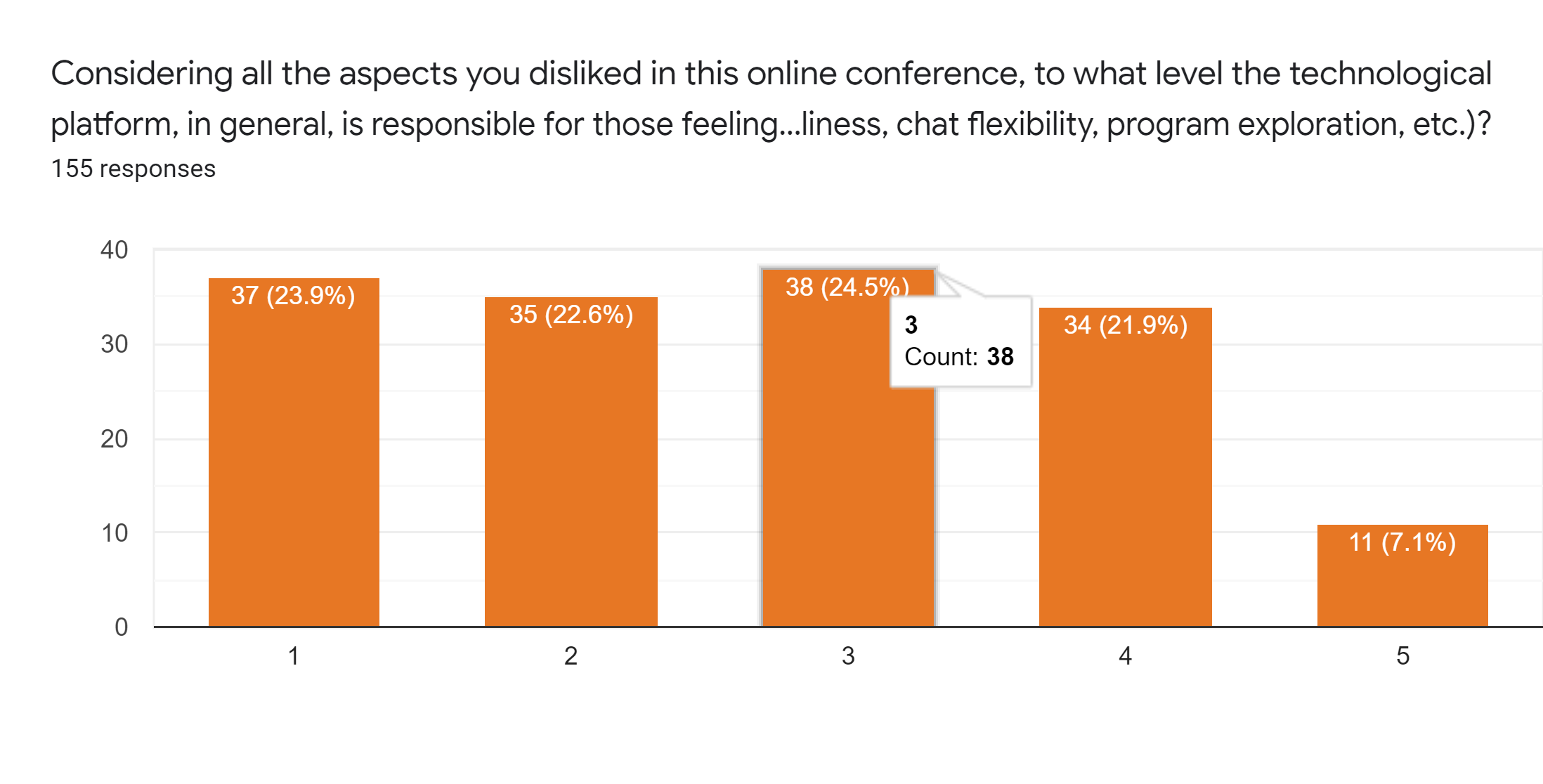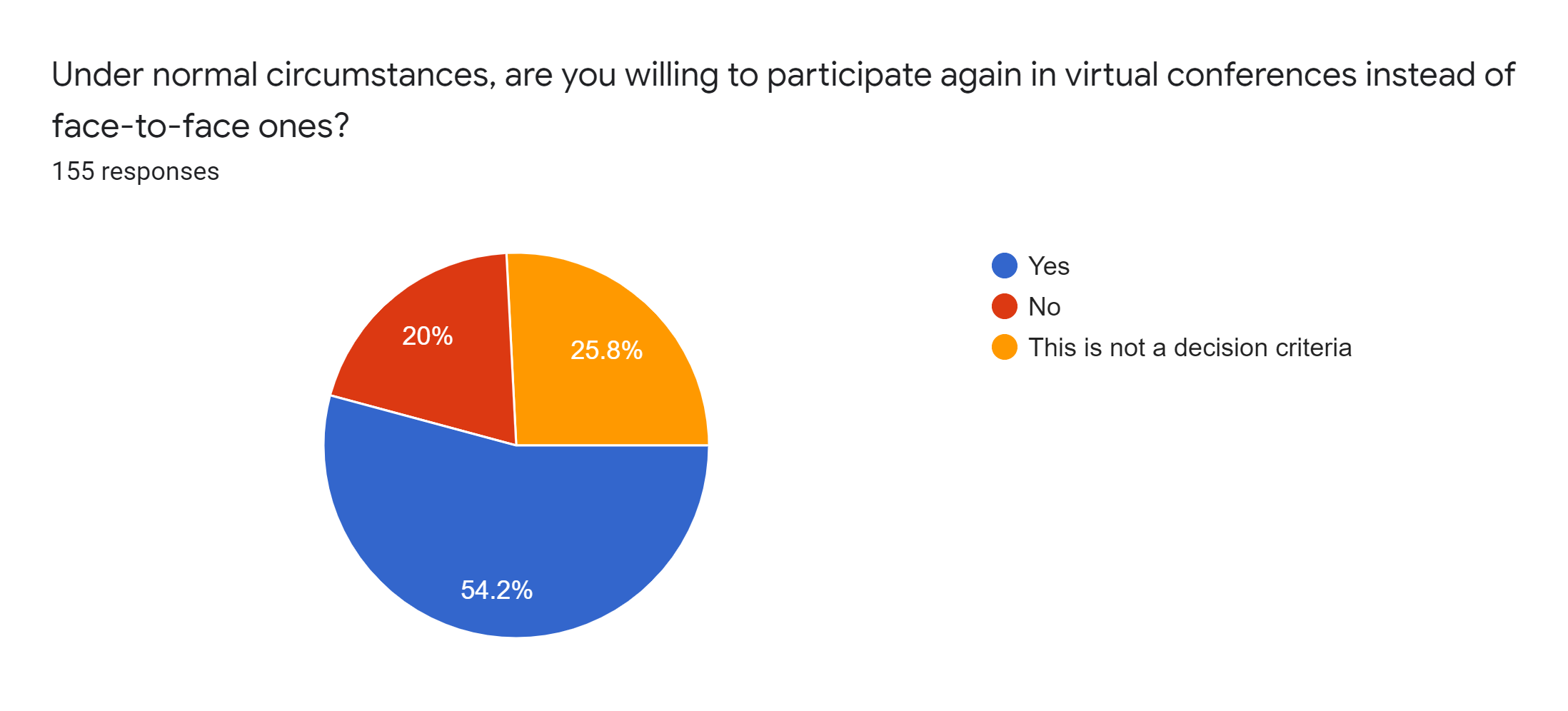Pivot to Virtual Conferences: Report on authors expectations and perceptions concerning EDUNINE2020 and EDUCON2020
Due to the current challenges conferences are facing as a result of the COVID-19 pandemic, the IEEE Education Society decided to evaluate the immediate impact on those that have moved to virtual events. We were mainly concerned with the perception and expectations of authors regarding future editions and the experience of attendants regarding the online model.
To accomplish this, we prepared a small survey with the following set of questions:
A) participants’ characterization concerning the country of origin and previous relation with the event;
B) reaction when the event format changed (withdraw registration or not);
C) prior experience with online events and perceptions about advantages and limitations (social, economic, and functional factors); and
D) impact of technology on disregard factors.
One final question addressed the willingness of authors to attend the same event if it is online again.
The results presented below are related to two conferences: EDUNINE 2020 (within R9), and EDUCON 2020 (within R8). From about 350 authors contacted, we received 154 valid responses, one third from EDUNINE and two thirds from EDUCON (which reflects the respective conference size).
Main conclusions
i) The majority of authors are from the region linked to the conference (55% from Region 8, and 35% from Region 9). Concerning first time submission, we have 62.8% of authors. However, in that group, 75% are linked to EDUNINE, reflecting the higher maturity level of EDUCON.
ii) Only one respondent decided to withdraw the registration after the decision to make the conference (EDUCON) online. However, the indicated reason was the registration cost and not the conference format. Note that EDUCON organizers opted for not adjusting the fees ahead. Instead, authors will be refunded after the conference and the final analysis of the financial dimension.
iii) For 78.7% of authors, this was the first experience with an online conference. As illustrated by the graphic in Figure 1, concerning the four social-related dimensions inquired (professional networking and interaction between presenters, attendees, and the community in general), there is a clear perception of the negative impact of an online event (left four sections of the graphic). However, concerning the facility to manage session attendance, the cost/benefit ratio, and the time use optimization (right four sections of the graphic), respondents indicate that there is an advantage to online events. A final dimension worth analyzing is the attractiveness of an online format for young researchers (6th section of the graphic, counting from left). In general, most respondents indicate a neutral or positive impact, but there is an asymmetry in both conferences since with EDUNINE the majority of respondents admit a positive impact. There is no characterization of ages over the sample, but EDUNINE authors are usually younger researchers, which is a possible reason for this observation. 
iv) Concerning the impact of technology in the disliked aspects, as shown in Figure 2, there is no clear tendency, and respondents spread their opinion all over the scale in a homogeneous way. Yet, only a small percentage (7.1%) consider technology limitations a significant obstacle. Anyway, this also shows that technology platforms still have ample space to improve user experience.

Figure 2 - Impact of technology
v) Finally, the last question aims to find if the authors are willing to attend the same conference if it is held online again. As shown in the graphic of Figure 3, only 20% indicate they would not participate in, while 54.2% indicate a favorable attitude, and 25.8% indicate that it is not a decision criterion.

The survey ends up with an open answer space for general comments. Among them, there are a few concerning the issues with different time zones and their impact on session attendance. It is important to recall that most attendees of these conferences came from the home regions. However, that may no longer hold for online events, and time zones will become a significant issue. Nevertheless, EdSoc has flagship events in all IEEE regions, which may also influence the spread of attendees, minimizing that effect.
Henrique Santos
Universidade do Minho
[email protected]
IEEE Education Society - Vice President for Conferences and Workshops